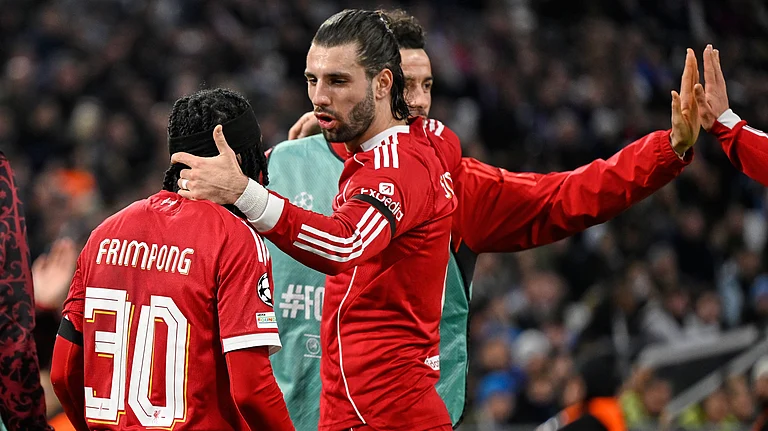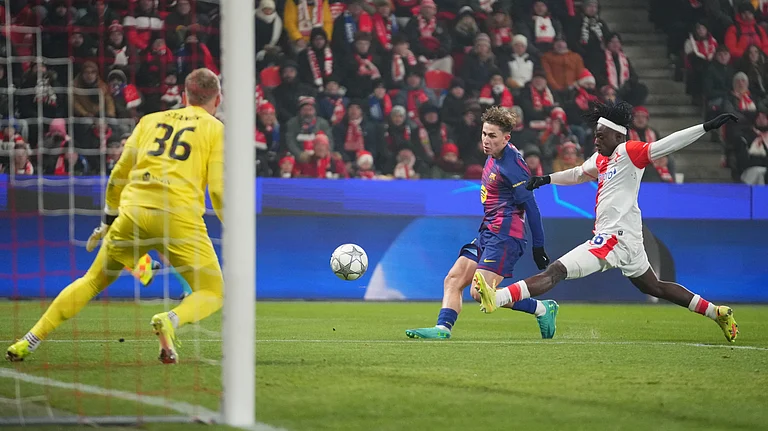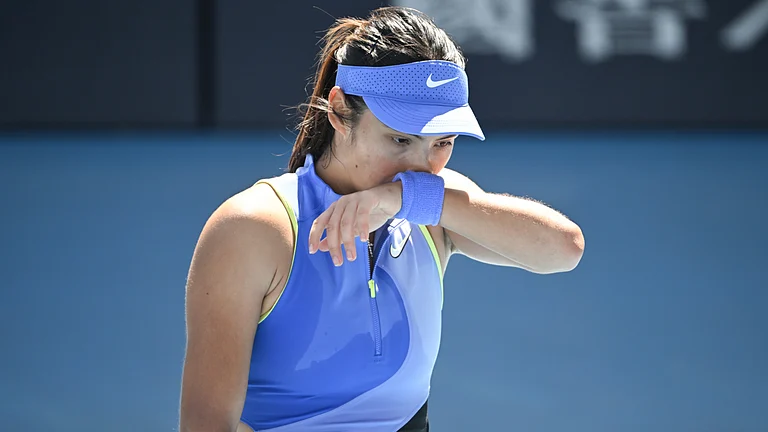In 1946, Don Bradman was 38 and in bad health. Fibrositis (a painful muscular condition) and gastric troubles plagued him. He was losing weight. The English cricket team was in Australia for the first post-war Ashes series. Bradman had an offer of £10,000 to quit the game and write on the series. His Test average at that point was 97.94. "If I played, the risk of failure was very great and the possible adverse effects on my business had to be considered. The financial reward for not playing was tempting," wrote Bradman. Doctors advised him against playing but he ignored them. In fact, he played another 15 Tests and hit eight hundreds.

Nearly six decades later, the man Bradman saw as his successor, Sachin Tendulkar, is in a similar situation. An injured toe is beyond repair; his strained back continues to cause worry. And now the tennis elbow. Tendulkar is only 31 but no sane doctor will give him a clean chit to continue playing indefinitely. The decision rests with Tendulkar. He will have to choose his games. Like Bradman, he too has a major media contract in hand. But in Tendulkar's case, the greater temptation is to play on rather than quit.
Great players leave behind legacies but geniuses merely leave a hole that is quickly covered up—they cannot have successors. A Bradman came, was seen, and conquered, but didn't give rise to a school of Bradmans. Likewise with
Gary Sobers. It will be the same with Tendulkar. He will be missed in the manner any giant will be; but it will just mean that we will have to readjust our sights. From drooling over a genius in the middle-order we will at best have to settle for the merely great.
"Every morning when I wake up, I don't feel the same," Tendulkar confessed recently. The message is clear: India will have to contemplate a future without Tendulkar. Perhaps the future is already here. If Tendulkar has to be preserved for international cricket, he might have to bid goodbye to one of its two forms and concentrate on Test matches alone. It is a difficult choice because Tendulkar is the greatest batsman one-day cricket has produced. Such a decision will throw the country into mourning and give marketing managers apoplexy. Tendulkar will have to choose between playing more matches half-fit or fewer matches with enough recovery time. Either compromise will be hard for a man whose life has been cricket. He has set the standards for the one-day game; in Tests, he is one century short of Sunil Gavaskar's record 34. Gavaskar played till he was 38. If given that luxury, Tendulkar will score more runs and centuries than anyone else. Only Bradman's average of 99.94 will be out of reach.

"We'd like to keep the door open for Tendulkar till the last minute," skipper Saurav Ganguly said before the first Test against Australia in Bangalore—a justification to carry Tendulkar around as the 15th member of the squad. There was talk of the 'psychological' effect on the opposition. The real reason lay elsewhere—the box office. Even the remote possibility of a half-fit Tendulkar playing pushes up ticket sales. The will-he-won't-he discussion in the media keeps the possibility alive. Scratch the surface and the monetary reason for most decisions in Indian cricket reveals itself. The final decision on Tendulkar will not be made by the doctors, but by the marketing agents and that is the battle Tendulkar will have to fight as the injuries slow him down. The Indian team will have to look upon Tendulkar as a bonus when he plays; he might not play a full series at full-throttle any more. It is a fear not many will articulate, because for 15 years Tendulkar has been an automatic selection, a modern great whom Bradman chose above Walter Hammond in his all-time 11.
At 19, the Mumbai boy was already the world's best batsman. Interestingly, Tendulkar himself seemed to agree with this assessment in a quiet, matter-of-fact way. This lack of arrogance might have caused him to be less destructive in Test cricket than he was, but it was a crucial element in his becoming a national icon. Indians don't like their sporting heroes to be arrogant men; they give their hearts to modest players who underplay their emotions while performing consistently.
Since the age of 15, when he made his first-class debut with a century, he has been playing cricket virtually round the year. That's 17 of his 31 years devoted to the game. Four more if you add the many hours he put in daily since he was 11. But before he calls it a day, there is some unfinished business. In Test cricket, he is yet to play his defining innings; Bradman had his 254, V.V.S. Laxman his 281, Viv Richards his 291. These knocks captured the players, their personality, range and uniqueness. In Tendulkar's case, there are some candidates like his 241 in Sydney earlier this year or his 114 at Perth in 1992 or his 165 in Chennai. Twenty years from now, which Tendulkar inning will remain in memory? That one knock which will encapsulate the man is yet to come. But there is a contradiction here, because it will be played by a man who would have become less like himself.
When Tendulkar was starting out, his first Ranji captain, Dilip Vengsarkar, said he was a combination of Gavaskar and Gundappa Vishwanath. He will now have to move into the Vengsarkar phase—more watchful, more conscious of making runs, a more Mumbai-like batsman who places efficiency above all else.

For years, when Tendulkar batted, he made everything around him look that bit less imposing; all activity around him that bit more banal. Yet, whoever replaces him is unlikely to feel the pressure of the opener who replaced Gavaskar, for example, because he will be under no compulsion to bat like Tendulkar. It is generally accepted that such a thing is impossible.
In the first Test after Gavaskar's retirement, India were dismissed for 75. It was another five series before they had a century-opening partnership. A genius by definition is irreplaceable; and at times, discouraging. Watching a Tendulkar bat might cause a lesser player to give up the game, saying: "What's the use? I can never play like that." It is the Gavaskars and the Rahul Dravids who inspire the younger batsmen to emulate them.
An Indian team without Tendulkar, therefore, will not be a disaster by any means. What might cause greater churning in the team would be if the four top batsmen—Tendulkar, Dravid, Laxman and Ganguly—all left around the same time, as is likely since they are in the same age group. Laxman, who celebrates his 30th birthday on November 1 is the youngest, while Ganguly, at 32, is the oldest. India's refusal to look at younger players like Venugopal Rao smacks of complacency. And this will cause greater harm than the loss of one player, however great he may be.
By missing matches in the home series, Tendulkar has already planted the idea in the minds of both the selectors and the public that he cannot carry on forever. We have been prepared and cannot complain that we are caught by surprise. Tendulkar's exit will be a greater emotional blow than a cricketing one. The volume of money generated by cricket might come down when that happens. And that might not be a bad thing at all. But well, that's another story.


























